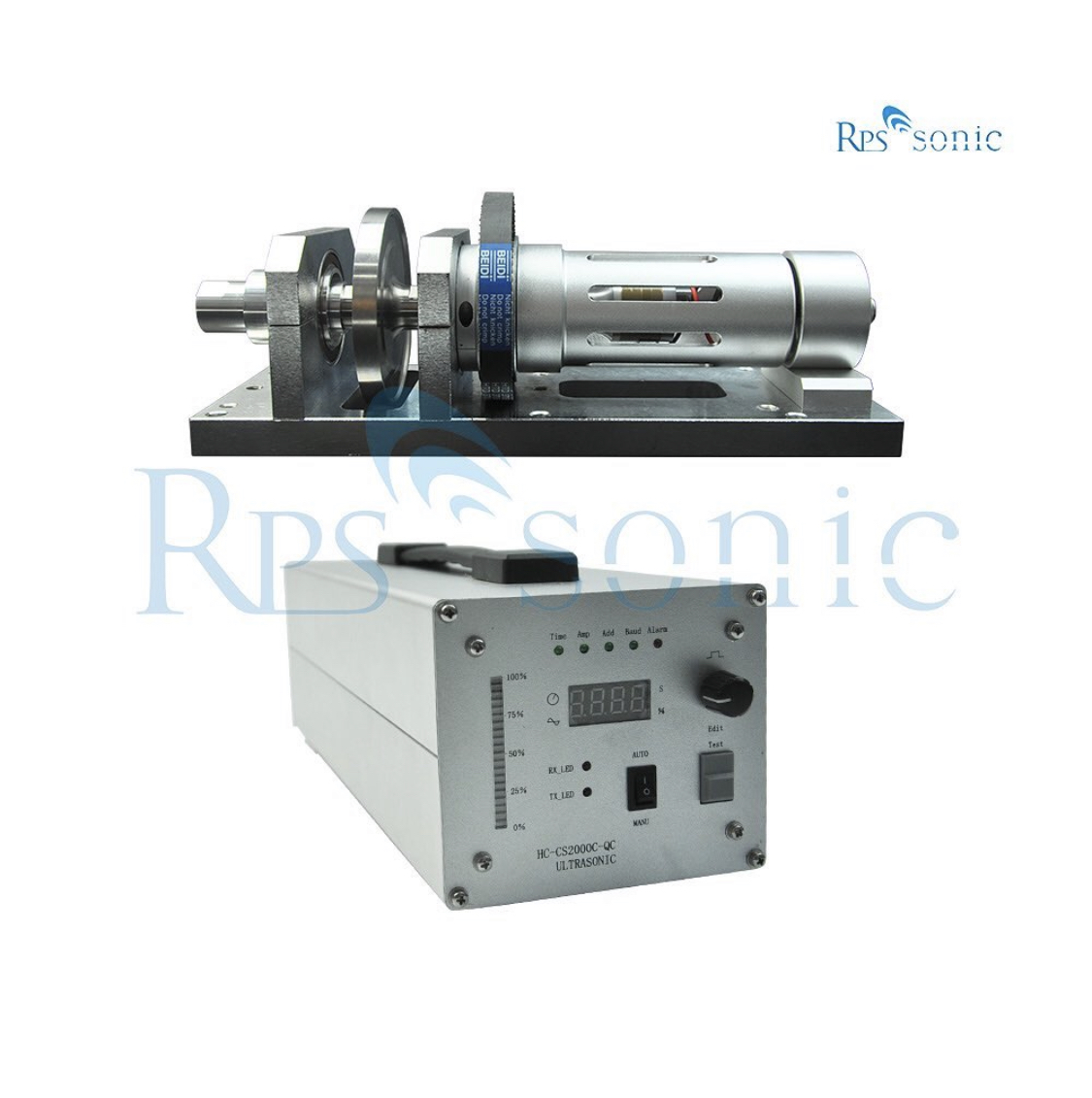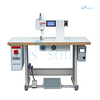
loading












| Availability: | |
|---|---|
| Quantity: | |
| Place of Origin | China |
|---|---|
| Brand Name | RPS-SONIC |
| Certification | CE |
| Model Number | RPS-W30 |
| Minimum Order Quantity | 1set |
| Packaging Details | carton box |
| Payment Terms | T/T |
30Khz 800W ultrsonic rotary sonotodes for sewing machine with welding,sealing and cutting function
Parameter:
| Item | Parameter |
| Frequency | 30Khz |
| Power | 1000W |
| Ceramice chips | 4chips |
| Speed | 20m/min in max |
| Welding width | 15mm in max |
| Welding horn | 30Khz rotary horn |
| Welding type | Continues welding |
Ultrasonic seamless welding is a specialized ultrasonic welding technique used to create continuous, seamless bonds or joints in materials, particularly thermoplastics or synthetic fabrics. It is characterized by its ability to produce a smooth, uniform weld without interruptions, making it ideal for applications requiring aesthetic or airtight sealing.
Ultrasonic Vibrations:
High-frequency ultrasonic waves (20–40 kHz) are generated by a transducer.
The energy is transmitted to a horn (sonotrode), which contacts the material.
Localized Heat Generation:
The ultrasonic energy generates heat due to molecular friction at the welding interface, melting the material in the target area.
Continuous Welding:
A rotary horn (sonotrode) or a continuous feed mechanism ensures that the welding process is uninterrupted, resulting in a smooth and seamless joint.
Cooling and Bonding:
As the melted material cools, it solidifies to form a strong, seamless bond.
Textiles and Apparel:
Seamless bonding in lingerie, activewear, and technical fabrics.
Producing nonwoven items like medical gowns and masks.
Medical Industry:
Airtight and sterile seals for medical bags, filters, or disposable wearables.
Packaging:
Seamless sealing of pouches, sachets, or blister packs.
Automotive Industry:
Seamless joints in airbags, interior trims, and acoustic panels.
Electronics:
Seamless encapsulation of components to protect them from moisture or contaminants.
30Khz 800W ultrsonic rotary sonotodes for sewing machine with welding,sealing and cutting function
Parameter:
| Item | Parameter |
| Frequency | 30Khz |
| Power | 1000W |
| Ceramice chips | 4chips |
| Speed | 20m/min in max |
| Welding width | 15mm in max |
| Welding horn | 30Khz rotary horn |
| Welding type | Continues welding |
Ultrasonic seamless welding is a specialized ultrasonic welding technique used to create continuous, seamless bonds or joints in materials, particularly thermoplastics or synthetic fabrics. It is characterized by its ability to produce a smooth, uniform weld without interruptions, making it ideal for applications requiring aesthetic or airtight sealing.
Ultrasonic Vibrations:
High-frequency ultrasonic waves (20–40 kHz) are generated by a transducer.
The energy is transmitted to a horn (sonotrode), which contacts the material.
Localized Heat Generation:
The ultrasonic energy generates heat due to molecular friction at the welding interface, melting the material in the target area.
Continuous Welding:
A rotary horn (sonotrode) or a continuous feed mechanism ensures that the welding process is uninterrupted, resulting in a smooth and seamless joint.
Cooling and Bonding:
As the melted material cools, it solidifies to form a strong, seamless bond.
Textiles and Apparel:
Seamless bonding in lingerie, activewear, and technical fabrics.
Producing nonwoven items like medical gowns and masks.
Medical Industry:
Airtight and sterile seals for medical bags, filters, or disposable wearables.
Packaging:
Seamless sealing of pouches, sachets, or blister packs.
Automotive Industry:
Seamless joints in airbags, interior trims, and acoustic panels.
Electronics:
Seamless encapsulation of components to protect them from moisture or contaminants.








Ultrasonic Welding Equipment Ultrasonic Welding Transducer Ultrasonic Welding Converter Ultrasonic Liquid Processor Ultrasonic Cutting Equipment Ultrasonic Spray Nozzles Ultrasonic Power Supply Ultrasonic Soldering Equipment Ultrasonic Welding Horn Ultrasonic Assisted Machining Ultrasonic Testing Equipment